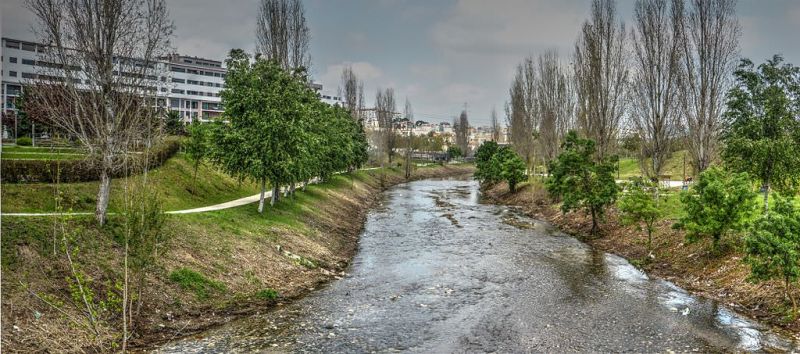In Urban Streams, Pharmaceutical Pollution is Driving Microbial Resistance
Published on by Water Network Research, Official research team of The Water Network in Academic
In urban streams, persistent pharmaceutical pollution can cause aquatic microbial communities to become resistant to drugs. So reports a new study published in the journal Ecosphere.

Urban stream, representative image, source: Wikimedia Commons
Emma Rosi, an aquatic ecologist at the Cary Institute of Ecosystem Studies and lead author on the study explains, "Wastewater treatment facilities are not equipped to remove many pharmaceutical compounds. We were interested in how stream microorganisms - which perform key ecosystem services like removing nutrients and breaking down leaf litter - respond to pharmaceutical pollution."
Researchers evaluated the presence of pharmaceuticals - including painkillers, stimulants, antihistamines, and antibiotics - in four streams in Baltimore, Maryland. Then they measured the microbial response to drug exposure. Study sites were selected to represent a gradient of development, from suburban to urban.
Microorganisms like bacteria and algae grow in complex assemblages called biofilms - the slimy coatings found on rocks in streambeds. These taxonomically diverse communities are essential to maintaining freshwater health. They drive nutrient cycling, break down contaminants, and form the base of the stream food web.
Rosi notes, "Different types of microbes can withstand different types and concentrations of synthetic chemicals. When we expose streams to pharmaceutical pollution, we are unwittingly altering their microbial communities. Yet little is known about what this means for ecological function and water quality."
The streams analyzed are part of the Baltimore Ecosystem Study, and have well-documented differences in sewage and nutrient contamination. Over a two-week period, passive samplers were deployed in the streams to capture a snapshot of the presence and abundance of six drugs. These included: caffeine and amphetamine (stimulants), acetaminophen and morphine (painkillers), sulfamethoxazole (antibiotic), and diphenhydramine (antihistamine).
Results were clear: urban streams had more pharmaceutical pollution. Compared to their suburban counterparts, they had both a greater number of drugs present, and higher drug concentrations.
Over the same two-week span, the team ran a test exploring how microbial communities in each of the four streams responded to exposure to caffeine, cimetidine, ciprofloxacin, and diphenhydramine. Contaminants were tested singly, with a focus on which microbial species could survive in the presence of the drugs, and how effectively they could function.
Co-author John J. Kelly of Loyola University Chicago explains, "Stream microbial communities are sensitive to pharmaceuticals, which can suppress both respiration and primary production. We used respiration as a proxy to assess microbes' ability to maintain biological function in the presence of pharmaceuticals."
Test jars containing the target pharmaceutical and cellulose sponges, which microbes can readily colonize, were placed in the four streams. Control jars, containing just the cellulose sponges, were placed near the test jars. Fourteen days later, the jars were brought into the lab and analyzed to determine the presence and abundance of microbial species and their respiration rates.
Caffeine, cimetidine, and ciprofloxacin led to a reduction in microbial respiration across all sites; diphenhydramine had a marginal effect. The antibiotic ciprofloxacin had a negative effect on respiration rates, but only in suburban streams. In urban streams, microbial respiration was the same in the drug-exposed and control test jars.
Following drug exposure, the type and abundance of microbial species were different at urban and suburban sites. In urban streams, microbial communities shifted in species composition and were better able to maintain respiration rates. This indicates that these streams harbor resistant microbes that can flourish when non-resistant species can no longer survive.
Read full article: Cary Institute
Media
Taxonomy
- Pollutants
- Integrated Urban Water Management
- River Studies
- Pollution
- River Engineering
- Urban Water
- River Basin management
- River Restoration
- Urban Water Infrastructure
- River Engineering
- Pollution